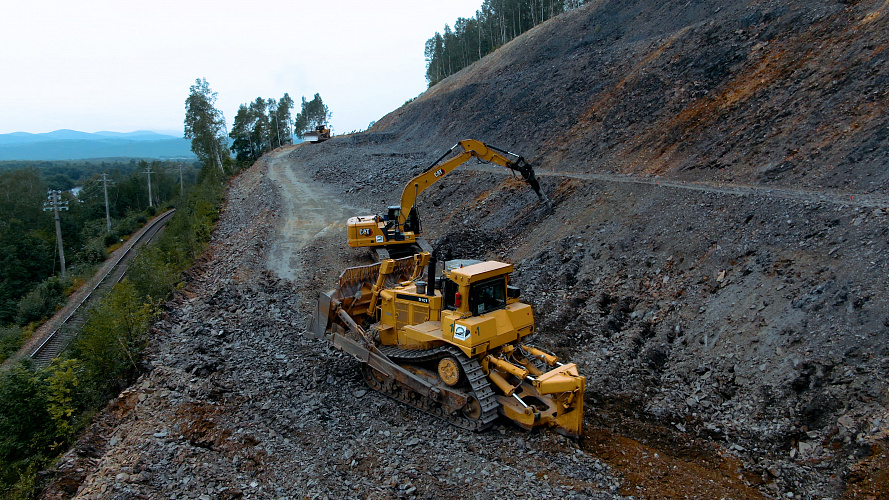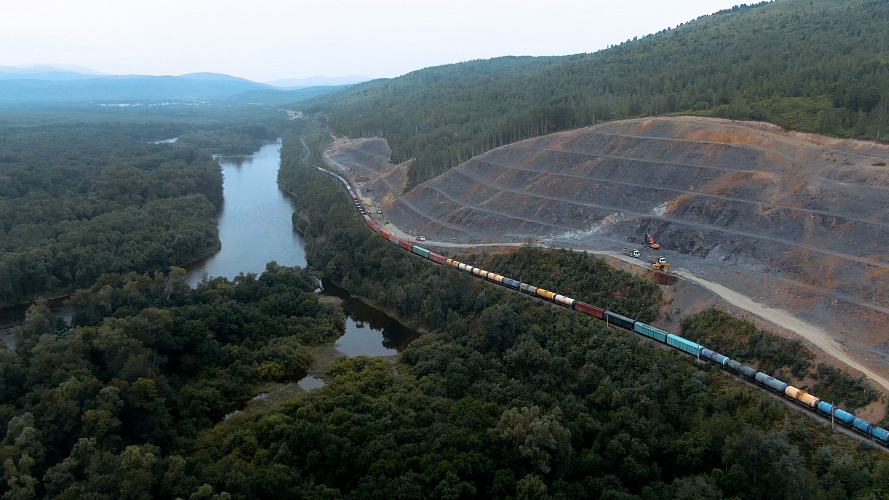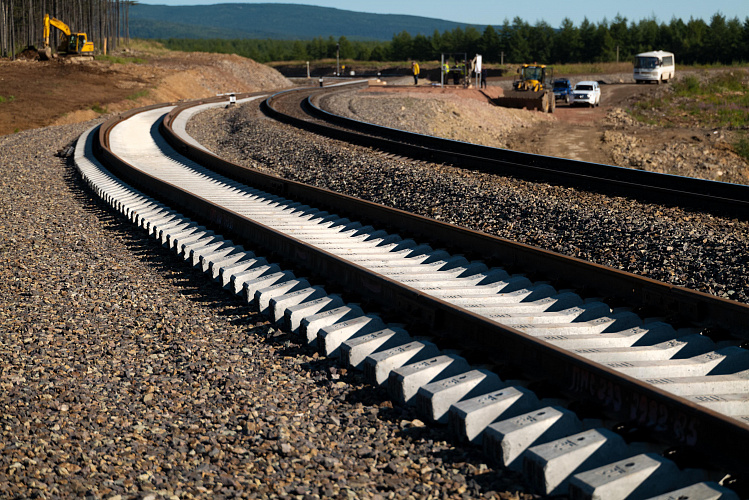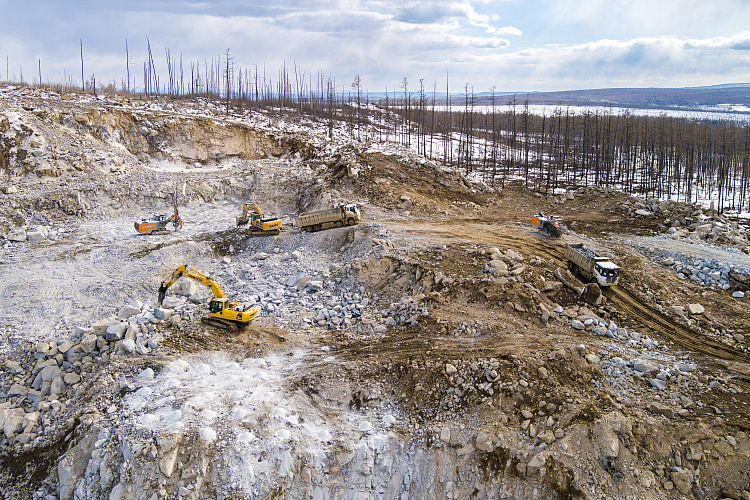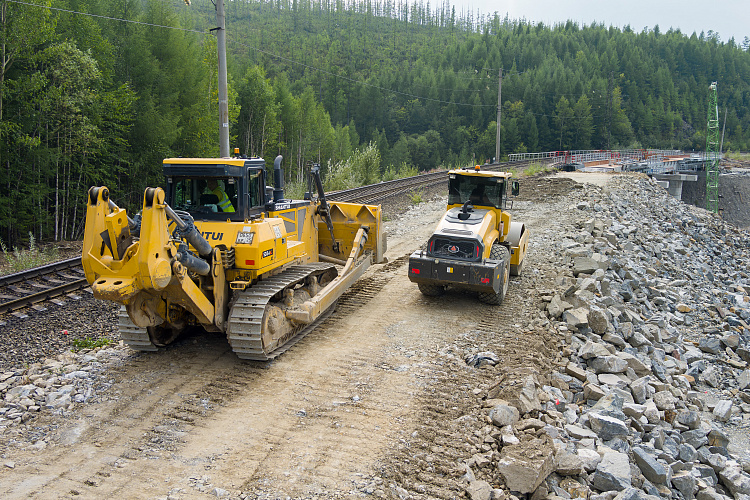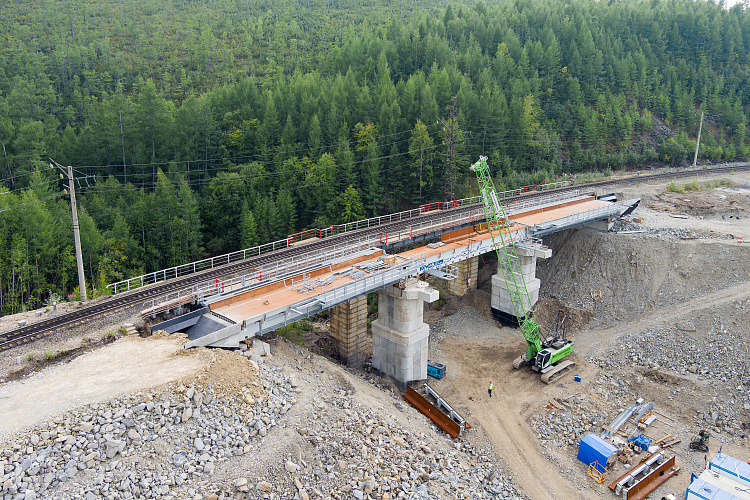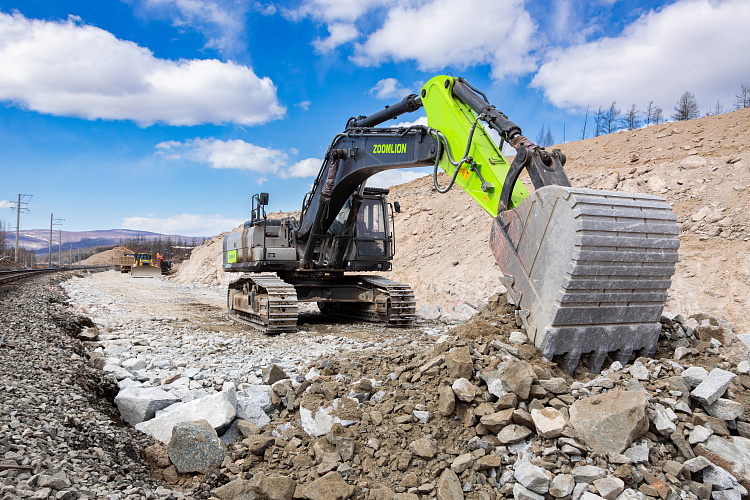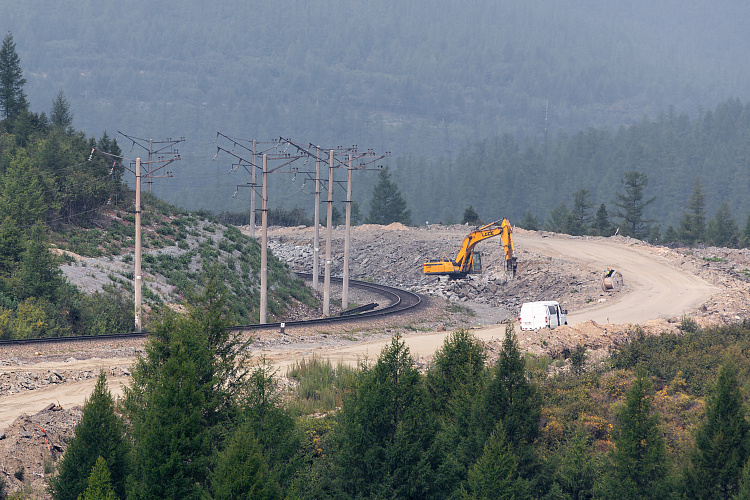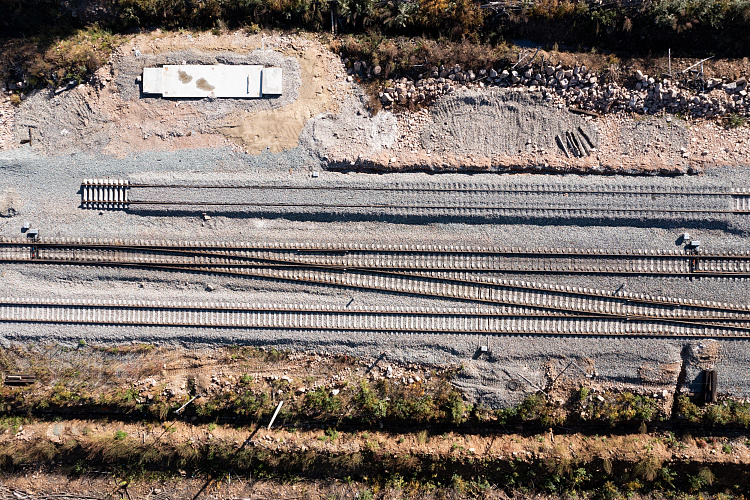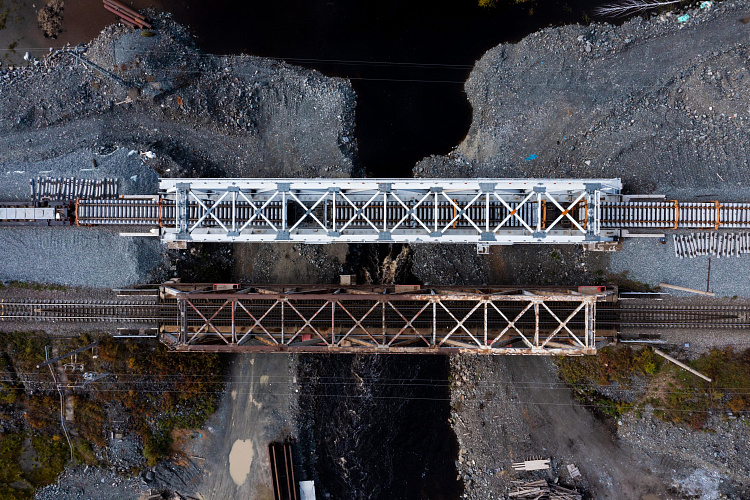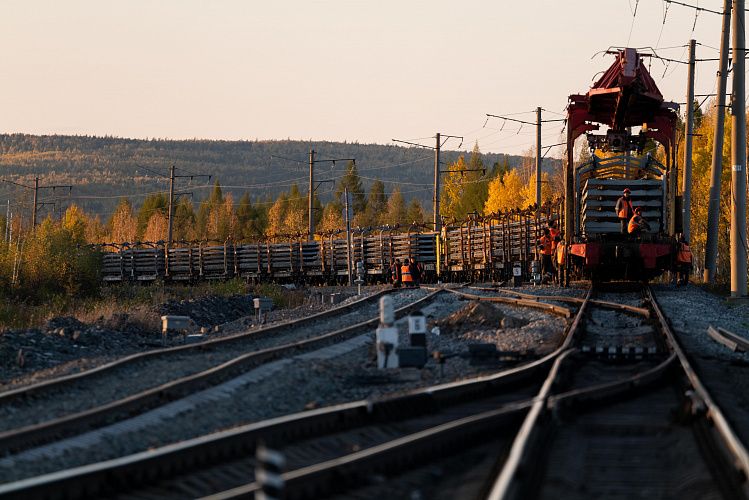Eastern Polygon: Upgrading Baikal – Amur Mainline and Trans Siberian Railway
The Eastern Polygon Railway Upgrade Program is the most important transport project approved by the Russian Government.
Natsproektstroy companies are responsible for more than half of all work. Builders are erecting side tracks and bridges, restoring the Baikal – Amur Mainline's alternate routes and introducing Russian digital automation.
In 2023 – 2024, NPS companies expanded 970 kilometres of Baikal – Amur Mainline, almost a quarter of the entire mainline, for side tracks. In August 2024, builders handed over more than a hundred kilometres of railbed to Russian Railways track stations, the best monthly result in modern Russia.
Builders work in the most difficult conditions: swamps, where machinery can pass only in winter. Freezing temperatures below -50°C. Mountainous terrain, seismicity, risk of rockfalls and avalanches. Hundreds of streams and rivers that overflow heavily during the rainy season. There are permafrost zones along most of the mainline. The construction is underway near the first stage of the Baikal – Amur Mainline, with active train traffic.
Builders use a range of measures to ensure transport safety. To preserve the permafrost, railbed slopes are covered with layers of coarse stone, stabilising the tracks. Polymeric materials are laid for waterproofing. Rocky slopes are stabilised with reinforcement structures.
In March 2025, Russian Transport Minister Roman Starovoit reported that, by the end of 2024, the target for the second phase of the Program had been achieved: the carrying capacity of the Eastern polygon had increased to 180 m tonnes. Phase 3 targets are to increase the capacity to 210 m tonnes by 2030 and 270 m tonnes by 2032.

